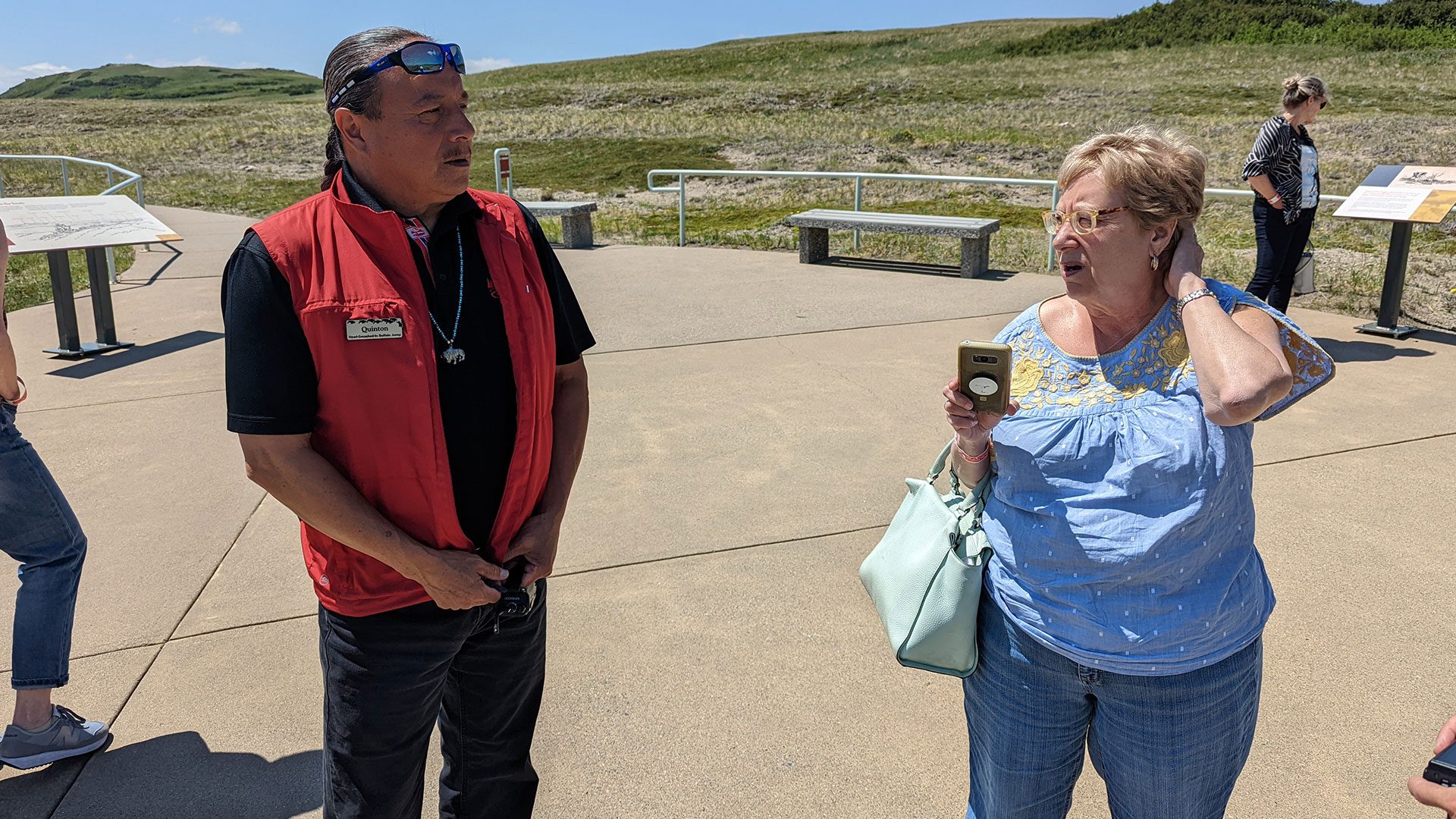For countless centuries, the Blackfoot people in southern Alberta have hunted buffalo using a buffalo jump.
Head-Smashed-In Buffalo Jump is one of hundreds of buffalo jumps that were across the great plains.
But this location is unique. It has a rare combination of everything needed with high plains, a good high cliff, and a lower plain for harvesting.
Quinton Crow Shoe works here and is one of the faces visitors see every year.
“Our ancestors would trick them or lure them into the edge of a cliff and they would stampede them over.” Crow Shoe told APTN News. “They were doing that for thousands of years. As a matter of fact, through carbon dating they dated this site close to 7,000 years old.
“I mean we were running buffalo over these cliffs before they were building the pyramids in Egypt and Stonehenge. So this is a very, very, old site.”
Head-Smashed in Buffalo Jump is also one of the oldest buffalo jumps in North America.

Quinton Crow Shoe’s grandfather, Joe Crow Shoe Sr., was a key person to get the interpretative centre built in 1987.
He has a room dedicated in his name.
Over three million visitors have walked through their door since. The site is listed as a federal and provincial historic site and a UNESCO Heritage Site.
In a buffalo jump, buffalo runners would panic and mobilize the herd. Dozens of members would line up on both sides of the buffalo pack and blind them using hides.
The only exit the buffalo saw, was the cliff ahead.
“It’s done in tune with the constellations, the wind. They time it so when the buffalo are actually being stampeded through those drive lanes, the last 50 meters, not only is it an optical illusion, but the sun is on it’s way up and it’s helping to blind the animal.” says Quinton Crow Shoe.
Today, the cliff is about 10 meters high because of erosion.
Thousands of years ago, the cliff was three times as high. Anywhere from 75 to 200 buffalo were hunted in the fall, when they were at their fattest. The food would help provide sustenance over the cold prairie winters.
“Once they go over the cliff, down below is known as the kill site where they would finish off the animals, quarter them,” Crow Shoe said. “And they would drag them to the lower level plain where it is easier to work. Everybody comes up from the clans. They would all come together here.”
Every part of the buffalo was used. “It was really the fat they were after, the fat had all the nutrients.”
The harvest ended in the mid 1800s when the buffalo declined, and firearms made the buffalo jump unnecessary. A 7,000-year tradition ended.
But its history will be told for future generations.











